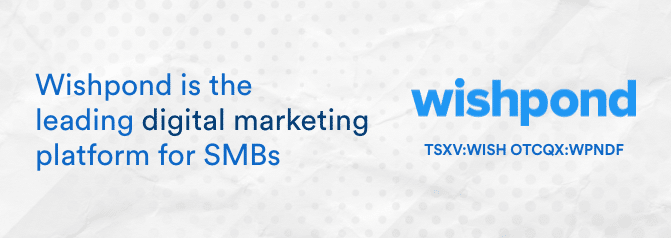

Wherever you go these days it’s hard to make a buck.
The realities of a low-interest rate environment simply make money in the bank a losing game. And in Canada, indexing your money over the past few years would have exposed you to an historic drop in the price of oil, and the resultant job that did on the stock exchange. Then there’s the ever-present currency risk.
For Canadian investors, especially those who believe our future will shaped as much by innovation as it will be by rocks and metals, the ability to generate income while exposing yourself to future trends has been limited.
These were the issues front and centre when the founders of TIMIA Capital (TIMIA Capital Stock Quote, Chart, News: TSX:TCA) began to form what would be a new kind of lender. TIMIA, which began operations in the summer of 2015, looked to solve the riddle of achieving tech exposure with a margin of safety that would be acceptable to mainstream investors. The solution is now in full swing. TIMIA makes debt-based investments into recurring revenue software companies that it receives monthly payments from. These monthly payments drive the payments made to its investors. The trick, of course, is to pick just the right companies. Cantech Letter sat down with CEO Mike Walkinshaw to talk about how the company does that.
Mike, can you tell us a bit about the history of TIMIA Capital?
TIMIA Capital came out of our experience as venture capitalists, technology lenders, and entrepreneurs. The financing ecosystem for private technology companies in Canada is broken, meaning entrepreneurs struggle to find financing that works for their businesses, even though those businesses are growing and have strong gross margins. Our conservative banking system and our small venture capital and angel capital pools are the primary reasons.
When did you begin to invest?
We started TIMIA with our first investment in August, 2015, however, Greg Smith, our CIO was a founder of Espresso Capital in 2008 and had proven out the technology lending proposition in Canada over that period. We both strongly believed that by accessing the public markets for both capital and investor liquidity, we could both offer new technology lending products and significantly grow the technology lending business. Since August, 2015, we have made 4 great investments, and have paid our investors over $250,000 via interest payments. Our portfolio of investments has grown its revenue at an average of 28% year over year. We look forward to growing our capital base, making more investments, and paying our investors more returns.
We are focused on funding growth. We are not funding technology risk. We look for companies that have a solid base of recurring software license revenue…
The management has a tech background?
Yes, we have all worked in the technology field, including starting a software company as well as a long track record of technology financing.
How does TIMIA Capital generate returns for investors?
We make debt based investments into growing recurring revenue software companies and we receive monthly payments from these companies. These monthly payments are what drive the payments we make to our investors.
What is the perfect kind of company for TIMIA to invest in? What’s your sweet spot?
We are focused on funding growth. We are not funding technology risk. We look for companies that have a solid base of recurring software license revenue, greater than $2M per year normally. We are also looking for strong year over year revenue growth, 20% or higher and normal software gross margins, > 70%. Typically, the founder still owns a significant percentage of the company and knows that new capital will allow for a significant increase in the value of the company. Usually, this is expansion into the United States or Europe. We can provide that capital in a manner that matches the company’s cash-flow, earning TIMIA a great return and allowing the entrepreneur to retain a significant percentage of his or her company.
Given the high gross margins and significant cash-flow that software companies can create, debt financing is a more viable option for them. However, it needs to be structured in a way that matches the growth in their cashflow.
One of the recurring themes we see is that companies are waiting to achieve a certain level of revenue before going IPO, and they are struggling to get financing to fund the growth to get to that hurdle. Do you find tech companies are more open to debt financings than they are to equity?
Given the high gross margins and significant cash-flow that software companies can create, debt financing is a more viable option for them. However, it needs to be structured in a way that matches the growth in their cashflow.
What is Revenue Financing?
Revenue financing is a financing model where repayment is tied to the company’s revenue instead of an equity position in the company. Our version of Revenue Financing is a debt instrument that gives the entrepreneur a repayment schedule that matches their revenue growth.
How do you think exits will typically happen and what will they do for TIMIA Capital investors?
Given our focus on investing in private software companies, we expect a significant portion (25% to 40%) of our portfolio will achieve an exit, either a sale or an IPO, during the term of our investment (5 to 6 years). When an exit happens, TIMIA will get bought out of its financing by the software company, resulting in a return of capital and bonus payments as structured under each deal. TIMIA may also profit from warrants that it holds in the underlying company. This will result in accretive cash flowing into TIMIA and benefitting shareholders, either as further investments or as dividends paid out.
We believe that we can achieve cash flow break even at between $10-million and $15-million of investments made, and can move to dividend as we scale up from there.
Can you tell us a bit about the companies you have invested in to date?
All are private software companies based in British Columbia. We have set up operations in Ontario and are expecting to do our first deal there in the very near term. Quickmobile is a mobile platform for managing and marketing internal and external events. iCompass Technologies provides web-based agenda management and records management software for local governments. Lambda Solutions is a learning management system for corporate customers, utilizing an open source platform and providing proprietary analytics. Predictable Revenue Inc., our fourth investment, is a Salesforce eco-system delivering outbound scaling services and proprietary platform to rapidly growing companies.
What do you expect the mix will be of winners and losers, company wise. Are you swinging for the fences or trying to hit singles?
TIMIA’s goal is to deliver significant returns through a combination of yield and capital gains. Our investments are more singles and doubles, with the odd triple. We are trading off home run potential for the security of monthly cash payments and a secured debt position.
What does the balance sheet and share structure of TIMIA look like? Will you go back to the market for more money?
Management and board members have made a significant cash commitment to TIMIA and own over 40% of the fully diluted capital of TIMIA. As of November 30, 2016, TIMIA had made $4.25M of debt investments into 4 companies. The capital for these investments was sourced from internal cash ( > $900,000), equity issuances (> $375,000), and issuance of debentures and convertible debentures (>$3,100,000). Insiders participated significantly in the equity and debt offerings. We look forward to accessing further equity and debt through the public markets to fund further investments.
What do you want to accomplish in the next 12 months?
We recently announced a 12% debenture offering, with 10% warrant coverage, and this capital will support our rapid expansion plans in 2017. We believe that we can achieve cash flow break even at between $10-million and $15-million of investments made, and can move to dividend as we scale up from there. We also expect to expand our operations further across Canada, driving deal flow beyond Ontario and B.C. Finally, we look forward to expanding our relationships within the public markets and telling our story as we grow.
Disclosure: TIMIA Capital is an annual sponsor of Cantech Letter.
Leave a Reply
You must be logged in to post a comment.




 Share
Share Tweet
Tweet Share
Share




Comment